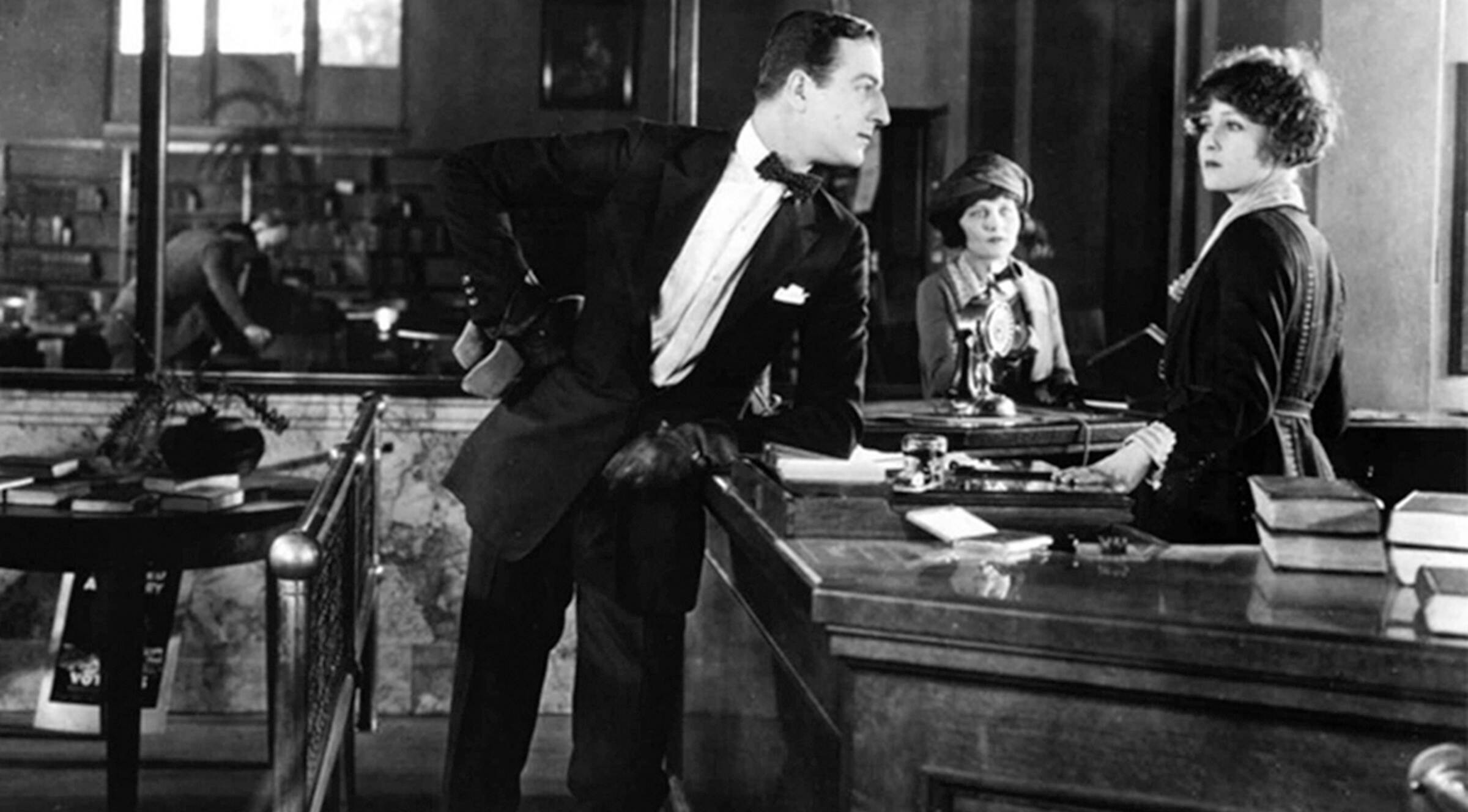In 1908, the newly married Lois Weber, a woman steeped in Victorian mores, gave up the stage to play the good wife to Phillips Smalley, an actor traveling with the same theater company where the young couple had met one year earlier. Unaccustomed to sitting idle, she soon began a new career writing and directing scenarios for the Gaumont Film Company in New Jersey, operated by the French filmmaker Alice Guy.
Born in Allegheny, Pennsylvania, sometime between 1879 and 1882—the exact date is disputed—Lois Weber was trained as a concert pianist, and she toured professionally for a brief period in her teens before joining the Church Army Workers, a Pittsburgh inner city mission, where she sang and played the organ. After her father’s unexpected death, Weber forsook storefront evangelism to groom herself for a career in musical comedies. She recalled in later years, “As I was convinced that the theatrical profession needed a missionary … I went on the stage filled with a great desire to convert my fellow men.” This missionary calling informed her entire career.
When Lois Weber joined Gaumont in 1910, she was part of a growing number of women entering the workforce. Jobs in the film industry were not yet prestigious enough to be reserved for men, and women were welcome. Alice Guy, the first female filmmaker and creator of the first “story” film (La fée aux choux, 1896), had been allowed to dabble in production as long as it did not interfere with her secretarial duties. Shortly thereafter, she was churning out a movie a week for her boss Leon Gaumont, who later entrusted her and her husband Herbert Blaché to establish the American branch of Gaumont. It was here that Lois Weber wrote and directed her first scenario, Mum’s the Word (1911). When Phillips Smalley returned from the road, he found his wife deeply immersed in the new industry, and together they began a 12-year collaboration in motion pictures.
In 1912, Weber and Smalley were placed in charge of Carl Laemmle’s Universal Pictures, and Weber wrote one scenario a week, directing many of them as well. “In moving pictures I have found my life’s work,” Weber said in a 1914 interview. “I find at once an outlet for my emotions and my ideals. I can preach to my heart’s content, and with the opportunity to write the play, act the leading role, and direct the entire production, if my message fails to reach someone, I can blame only myself.”
Weber made her first four-reeler, The Hypocrites, in 1914. An allegory about hypocrisy in organized religion, it features actress Margaret Edwards completely nude as a symbolic representation of the “Naked Truth.” The film caused an uproar at the Strand Theatre in New York, and it was censored in Ohio and Boston. The ensuing publicity made a name for Lois Weber as a director who could make quality pictures and attract big box office. She set many of her films in domestic situations, often based on human interest stories culled from the daily news. “I admit frankly that I get a large share of my plots from the newspapers,” she said in 1915. “I read them faithfully — not only for the news, but more especially for the little, delicate glimpses of human motives and human lives which I catch between the lines, the things which the writer unconsciously feels, perhaps.”
Weber was widely recognized as one of the best directors in the business male or female, earning top dollar ($5,000 a week) and garnering high praise from studio boss Carl Laemmle. “She knows the motion picture business as few people do and can drive herself as hard as anyone I have ever known.” During her tenure at Universal, Weber made Where Are My Children? (1916) and The Hand That Rocks the Cradle (1917), two controversial films about birth control (which also condemn abortion as “race suicide”) based on the pioneering work of Margaret Sanger, as well as The People vs. John Doe (1916), which decried the immorality of capital punishment.
But Weber still bristled at having to answer to Laemmle. “What other artist has his creative work interfered with by someone else?” she lamented in 1916. So Laemmle gave Weber her own production company and signed her to an exclusive distribution deal. With Lois Weber Productions, she finally had the ideal environment in which to fulfill her “sacred duty” to educate audiences about contemporary social issues. She continued to write her own scenarios, and by shooting on location with small casts and filming every scene in sequence, she created a body of work that reflected a more subtle approach to filmmaking. Audiences, however, no longer responded to Weber’s messages as they had. After releasing only five features, she was forced to accept contract directing jobs.
In 1927, she made her final silent film, Sensation Seekers, about a Jazz Age baby who is saved by the love of a minister. She was replaced by William Wyler to direct Glamour (1933), and her final film White Heat (1934), about miscegenation and racism on a Hawaiian plantation, received only a limited release in the Los Angeles area. She died in Hollywood in 1939.
Presented at SFSFF 2002 with live music by Michael Mortilla

